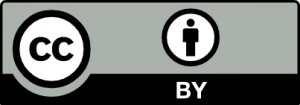Analisis Kelayakan Penyajian Buku Teks Bahasa Indonesia Kelas VIII Kurikulum 2013 Terbitan Kemendikbud 2017
DOI:
https://doi.org/10.25299/s.v1i2.8790Keywords:
buku teks, teknik penyajian, kelayakan penyajianAbstract
The purpose of this study is to describe the presentation techniques contained in the Indonesian language textbook class VIII Curriculum 2013 published by the Ministry of Education and Culture 2017. The method used is a qualitative method with point data analysis techniques. Class VIII Curriculum 2013 published by the Ministry of Education and Culture in 2017 whether it is feasible or not in terms of presentation feasibility. Through textbooks, students can do the exercises instructed in the textbook independently and think and be able to be constructive, able to make observations and do the exercises instructed in the textbook independently. The results of the analysis regarding the feasibility of presenting this book are almost in accordance with the provisions set by the National Education Standards Agency and the Center for Books (2014). The material presented is also not out of thinking ability for junior high school students because the material in the book is also presented in a simple way.
Downloads
References
Alwi, H. (2001). Kamus besar Bahasa Indonesia edisi ketiga. In Pusat Bahasa Departemen Pendidikan Nasional (Edisi III). Balai Pustaka.
Arifin, S. (2009). Sukses menulis buku ajar dan referensi : teknik dan strategi menjadikan tulisan anda layak diterbitkan. Grasindo.
BSNP. (2014). Instrumen Penilaian Buku Teks Pelajaran Tahun 2014 Kelompok Peminatan MIPA. BSNP.
Dewi Astuti, R., Suwandi, S., & Waluyo, B. (2017). Kelayakan Buku Pelajaran Bahasa Indonesia Kelas X Ekspresi Diri Dan Akademik. Sastra Indonesia Dan Pengajarannya, 5.
Ernawati, Y. (2019). Telaah Buku Teks Tematik Terpadu Kelas Iv Sd Kurikulum 2013. Jurnal Ilmiah Bina Edukasi, 11(2), 109–123. https://doi.org/10.33557/jedukasi.v11i2.223
Jitendra, A. K., Griffin, C. C., & Xin, Y. P. (2010). An Evaluation of the Intended and Implemented Curricula’s Adherence to the NCTM Standards on the Mathematics Achievement of Third Grade Students: A Case Study. Journal of Curriculum and Instruction, 4(2), 33. https://doi.org/10.3776/JOCI.2010.V4N2P33
Mukhlis, M., Asnawi, A., & Rasdana, O. (2020). Pengembangan Bahan Ajar Teks Eksposisi Berbasis Tunjuk Ajar Melayu. Jurnal Sastra Indonesia, 9(2), 97–102. https://doi.org/10.15294/jsi.v9i2.39120
Mulyahati, B. (2014). Analisis Buku Tematik Terpadu Kurikulum 2013 Kelas Iv Sekolah Dasar.
Suhita, R. (n.d.). Kajian Buku Teks Pelajaran Bahasa Indonesia Untuk Kelas X Sekolah Menengah Atas Edisi Revisi 2016.
Tohirin. (2013). Metode Penelitian Kualitatif dalam Pendidikan dan Bimbingan Konseling: Pendekatan Praktis untuk Peneliti Pemula dan Dilengkapi dengan Contoh Transkrip Hasil Wawancara serta Model Penyajian Data. Rajawali Press.
Widodo, C. S. dan J. (2008). Pand Meny Bahan Ajar Basis Kompetensi+cd - Google Books. Jakarta: PT Elex Media Komputindo.





























